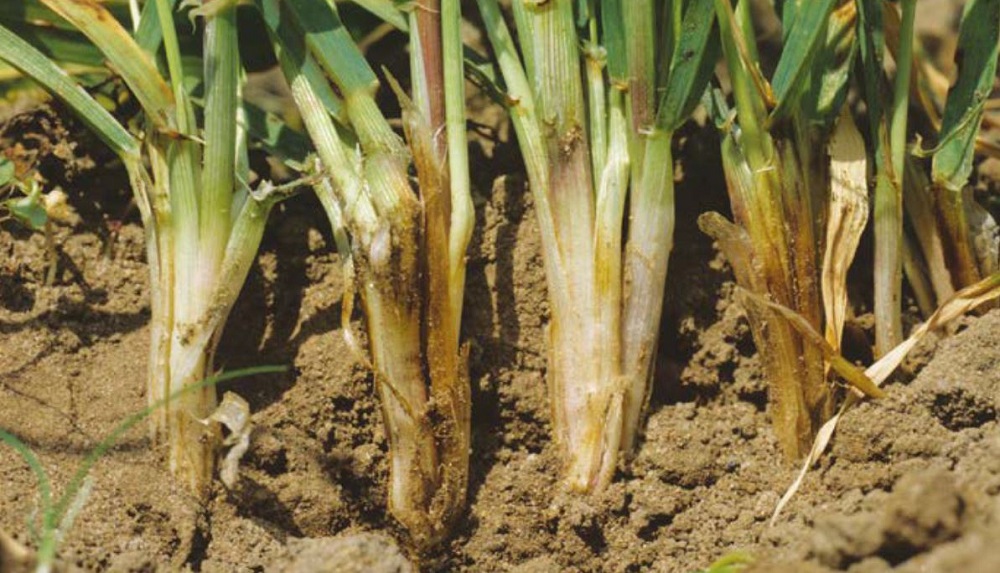- Home
- Knowledge library
- Understanding cereal foot rots
Understanding cereal foot rots
Although relatively rare in the UK, foot rots – caused by Cochliobolus sativus – are favoured by specific environments. As the symptoms can be confused with foot rots caused by other pathogens, it is important to know which one is causing disease in your cereals.
Cereal disease management homepage
What are the symptoms of foot rot?
The fungus that causes foot rot – Cochliobolus sativus (Drechslera sorokiniana) – affects all cereals (barley, wheat, oats, rye and triticale).
The disease is seedborne and soilborne (it can also survive on crop debris and some grass weeds).
- Seedborne infection can result in seedling death
- Infection of emerging seedlings occasionally produces a seedling blight
- More commonly, it infects seedling roots and stem-bases
Infected plants show brown spotting on the lower leaves and browning on stem-bases.
Splash-borne spores are released from leaf spots and stem-base infections. Spores carried to emerging ears may result in seed infection.
Severe infections (rare in the UK) can result in:
- Stem-base rotting
- Stunted plants
- Early maturation
- Shrivelled grain/poorly filled ears
The symptoms associated with C. sativus are similar to those caused by Fusarium spp.
Find out about fusarium foot rot in cereals
.PNG) AHDB
AHDB
What increases foot-rot risk?
- It is traditionally a disease of hotter climates than that of the UK
- Barley crops are at higher risk*
- It is more often recorded on spring barley than winter barley
- Varietal differences in susceptibility have also been documented
- Infections tend to be higher in organic systems
*An advisory treatment threshold has been set for barley. If over 30% of seed is infected (determined by a laboratory test), consider treatment.



